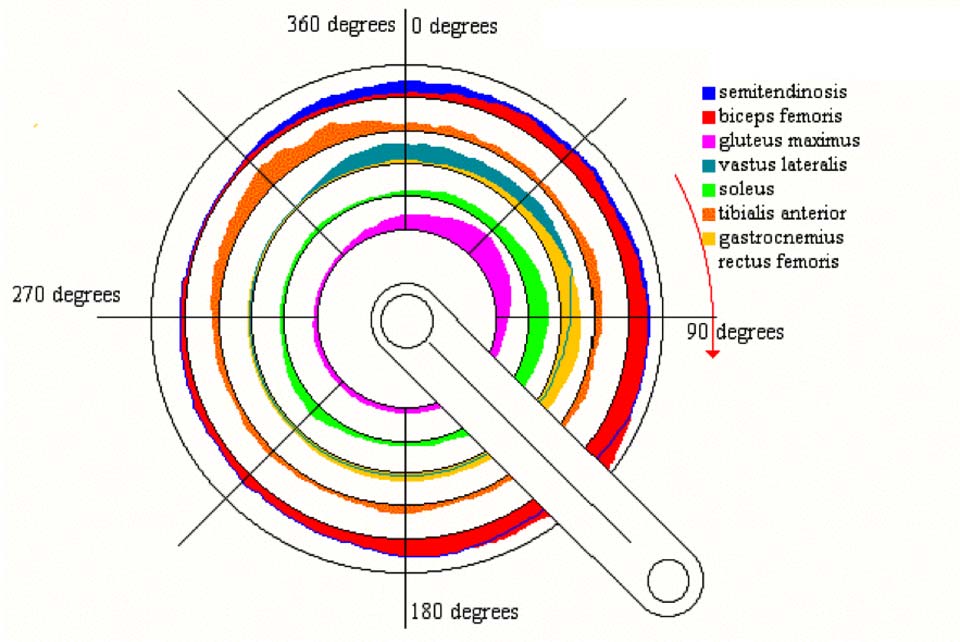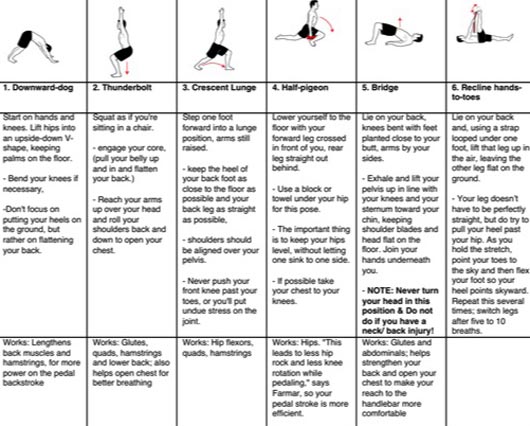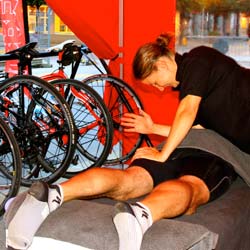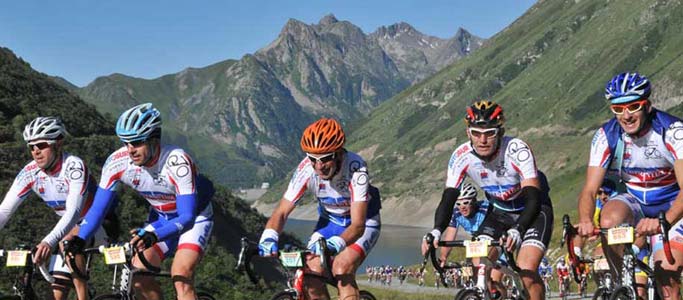The importance of cycling recovery is underestimated.
We asked Brevet soigneur Lydia Durkin to talk us through effective cycling recovery techniques.
Over to you Lydia.
Cycling Recovery – What’s it all about?
If you are experiencing heavy, aching, fatigued muscles a day or two after a race or breakthrough training session you may need to look into your post-race cycling recovery plan… a cool beer and a sit down is important, but the race isn’t done once you’ve passed the finish line.
For efficient recovery it’s important to define and target the main muscle groups used when pedaling:

Source: bikejames.com
DOMs and Cycling Recovery Explained
Delayed onset muscle soreness (DOMs) is the pain and stiffness felt in muscles hours or days (peaking around 24 to 72 hours) after strenuous activity or post-race.
DOMs are commonly caused by eccentric muscle contraction, when a muscle group contracts as it lengthens. Repeating this action can cause micro-trauma in muscle fibres and thereby tissue inflammation and muscle soreness.
Should you exercise when you have DOMs? In the case of micro-trauma, a moderate level of exercise is acceptable. This may also help to promote circulation thus preventing adhesions forming within the damaged area.
However it’s important to limit post-race exercise to “active-recovery” as further over-use or over-load within the damaged area will place huge demand on the already inflamed micro-trauma; thus preventing proper recovery and potentially further damaging the same or surrounding muscle fibres.
Cycling Recovery Tips
The objective of post-race recovery is to avoid muscle micro-trauma and manage the progressive overload of a grueling event.
Here are 6 effective cycling recovery techniques that focus on: normalizing tissue, restoring muscle tone, restoring muscle length and ‘Flushing out’ any congested areas via the lymph nodes.
All which help to: prevent DOMs and muscle soreness, restore flexibility; relieve muscle cramps/spasms and support metabolic recovery.
Cycling Recovery Step 1: Cool Down
It sounds simple, but don’t sit down directly after a race. Stopping too soon after an intense race may cause leg cramps or fainting, both of which can damage muscle fibre.
- Walking (active recovery) for between 10-15 minutes post-race helps blood circulation
- Blood brings oxygen and white blood cells through to your muscles to help recovery
- A walk later in the day (pre/post dinner) is also beneficial in the recovery process
Cycling Recovery Step 2: Stretch
Stretching seems to get forgotten amongst race time comparisons, adrenalin, post race highs and lows. Do not forget to stretch for between 10-15mins after active recovery. Here are some great stretches that target the main muscle groups in cycling:

Check out these Cycling recovery stretches from Bicycling Magazine
Cycling Recovery Step 3: Fuel and Water
Needless to say, it’s important to replenish your glycogen storage. Research points to ‘a short but critical window for refueling muscles, within 45 minutes to one hour after exercise’ (Source: Indiana University). Balanced refueling (carbohydrates-protein-some fat) and water are equally important to help your recovery.
If your stomach can’t handle food right after you finish, then try a sports drink or chocolate milk; both have a healthy mix of electrolytes, sugar and calories.
Cycling Recovery Step 4: Rest
Not only do you deserve a few days of rest before you get back on the saddle, but your body needs it to recover and rebuild itself stronger and fitter. If you head back out on the open road or turbo trainer too soon, you may risk the possibility of poor form on fatigued muscles and increase your chance of injury.
If you just can’t stay away, go for a short, low resistant, flat spin or do some stretching to get moving. Swimming is also excellent to open up your back and neck in a different movement pattern.
Cycling Recovery Step 5: Sports Massage
Book a massage post-race sports massage. Sports massage offers excellent post-race cycling recovery.
By combining manual work and stretching techniques, massage helps to increase blood flow, target over-used muscle and a good therapist will be able to define any early onset muscle adhesions/ injury.
Cycling Recovery Step 6: Ice
An ice bath or more simply an ice pack helps to decrease DOMs, inflammation and acute muscle soreness. The idea is to alternate between temperatures to help blood vasodilatation. Try 5 minutes ice pack, 5 minutes hot shower (or wrap up in warm towel) and repeat for 20 minutes in total.
About the Author
Lydia Durkin is a qualified sports massage and remedial therapist and owner of Durkin SMRT. Lydia was Brevet’s soigneur at the Alpenbrevet this year where her post race massages were very popular in the Brevet Club House!
Sportive Training Plan
Are you in training for a sportive? Use our free 12 week Sportive Training Plan to get you in the best possible shape for your sportive challenge. Simply fill the form below and we’ll send you your free training plan:


